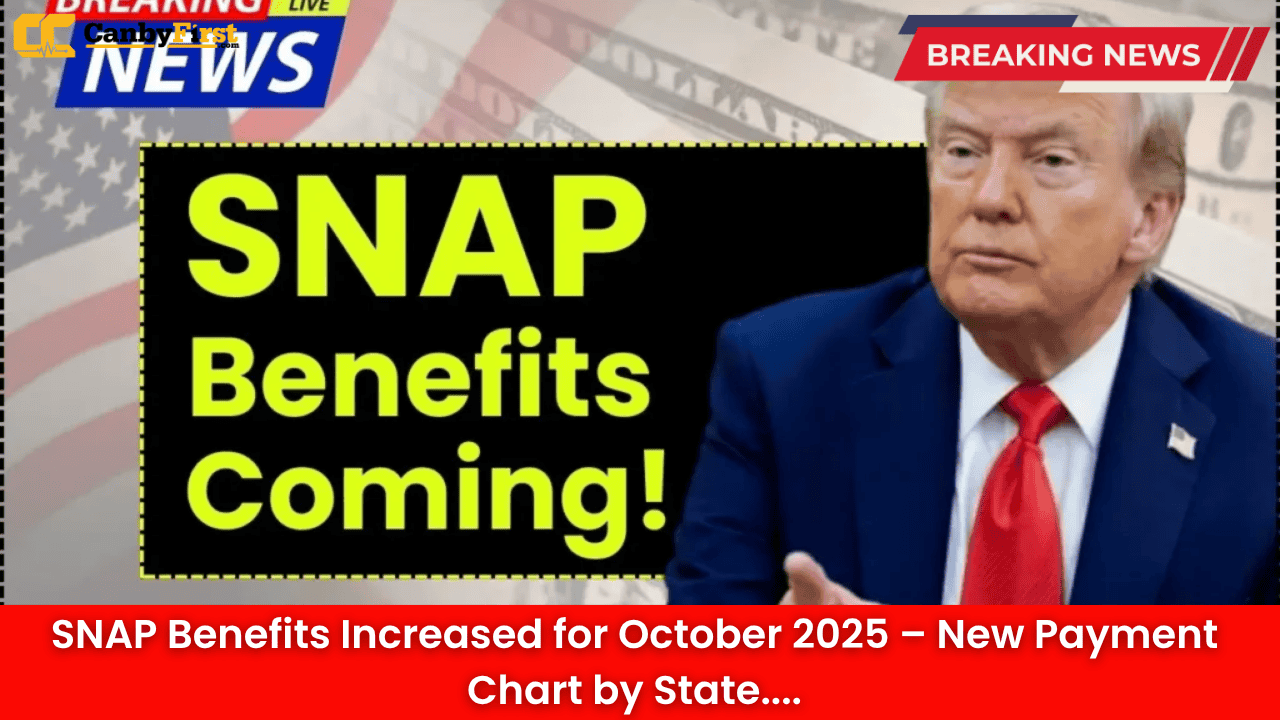In a major relief for millions of low-income households across the United States, the Supplemental Nutrition Assistance Program (SNAP) benefits are officially increasing starting October 2025. The U.S. Department of Agriculture (USDA) announced the adjustments as part of the annual cost-of-living update, ensuring that benefits keep pace with rising food costs and inflation.
Why the Increase Matters
Rising grocery prices over the last year have placed a heavy burden on families already struggling to make ends meet. The SNAP increase comes at a crucial time, offering households a much-needed boost in their monthly benefits. Officials report that the 2025 adjustments will give families an average of $25 to $40 more per month, depending on household size and state of residence.
For the over 41 million Americans who rely on SNAP to afford groceries, the updated payment chart reflects both inflation adjustments and cost differences across states and U.S. territories.
Also Read
How SNAP Payments Are Determined
SNAP benefits are determined by a household’s income, size, and allowable expenses. However, the maximum allotments change annually based on the USDA’s “Thrifty Food Plan,” which estimates the cost of a nutritious, budget-conscious diet.
The 2025 increase ensures that households receive more support as food prices remain high. For example:
-
A single individual will now receive up to $314 in most states.
-
A household of four could receive up to $973 per month.
-
Larger families are eligible for progressively higher amounts.
Benefit amounts also vary by state, particularly in Hawaii, Alaska, Guam, and the U.S. Virgin Islands, where food costs are substantially higher than the national average.
New SNAP Payment Chart for October 2025
Below is a breakdown of the updated monthly maximum benefit amounts by household size. These apply to the 48 contiguous states and the District of Columbia; separate values exist for Alaska, Hawaii, Guam, and the Virgin Islands.
| Household Size | 48 States & DC | Alaska (Urban) | Hawaii | Guam | US Virgin Islands |
|---|---|---|---|---|---|
| 1 | $314 | $402 | $382 | $394 | $361 |
| 2 | $577 | $740 | $706 | $728 | $668 |
| 3 | $766 | $981 | $936 | $964 | $884 |
| 4 | $973 | $1248 | $1189 | $1223 | $1120 |
| 5 | $1152 | $1460 | $1390 | $1429 | $1307 |
| 6 | $1379 | $1744 | $1653 | $1699 | $1554 |
| 7 | $1527 | $1933 | $1832 | $1883 | $1720 |
| 8 | $1755 | $2220 | $2107 | $2165 | $1976 |
| Each Additional Member | +$219 | +$278 | +$264 | +$272 | +$249 |
These adjustments ensure that households across different regions receive equitable support that reflects the real cost of living in their area.
State Payment Schedules
While benefit amounts are determined at the federal level, payment dates vary by state. Most states distribute SNAP benefits during the first two weeks of the month, though some extend payments across the entire month. Recipients should check their state’s official payment schedule to know exactly when their funds will be loaded onto their Electronic Benefits Transfer (EBT) cards.
Impact on Families
For many families, these adjustments can mean healthier meals, less reliance on food pantries, and a reduced risk of food insecurity. Single parents, seniors living on fixed incomes, and working-class households stand to benefit the most.
Community advocates stress that even with the increase, challenges remain for families in states with persistently high food costs. However, the nationwide increase is a step toward alleviating hunger and strengthening nutritional security.
How to Check Eligibility
Eligibility requirements remain unchanged. Households must meet income thresholds based on the federal poverty level and verify expenses such as rent, utilities, and childcare. Applications can be submitted online or through local state agencies. Current beneficiaries do not need to reapply to receive the increase—it will be applied automatically starting in October 2025.
Looking Ahead
The annual adjustment underscores the government’s commitment to aligning benefits with the economic realities faced by families nationwide. While the October 2025 increase delivers some relief, advocates continue to push for further expansions, particularly as inflation and housing costs weigh heavily on low- and middle-income families.
FAQs
1. When will the new SNAP benefits go into effect?
The increased benefits take effect for all recipients starting October 2025.
2. Do I need to reapply to receive the increase?
No. Current SNAP recipients will receive the boosted benefits automatically.
3. Why do benefit amounts vary by state?
Some states and territories have higher food costs, so SNAP allocates more funds there.
4. How much more will families receive on average?
Households will see an increase of about $25 to $40 more per month, depending on size and income.
5. Where can I find the exact payment date for my state?
Each state has its own payment calendar; recipients need to check their official state SNAP website or contact local agencies for dates.












